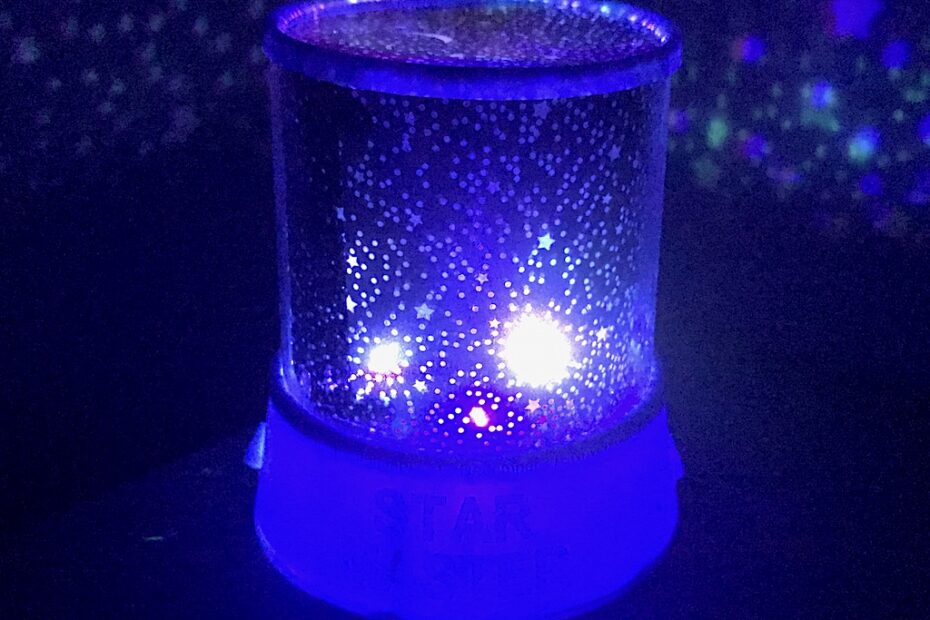My kids bought these fun little star projectors with color changing lights. The fun stops though when someone plugs a 9 volt adapter into the plug labelled “3 – 4.5 volts” and fries the lights inside. Fortunately it was not very hard or expensive to fix.
Looking Inside
It turns out that there is no central controlling circuit inside. Each LED light has it own integrated controller driving it internally. So, all they need is 3 to 4.5 volts to light up & fade between colors.

I found some replacement lights on Amazon. They turned out to have a very similar color changing pattern to the original lights. They are sold in bags of 100 lights. I’m sure I’ll find a use for other 97 lights eventually.
Replacing the LEDs
The LEDs need to be hooked up in parallel, connected directly to power and also to ground through a current limiting resistor. So I soldered up my replacement lights, making sure the anode & cathode end are connected together.

Then I replaced the old string of lights with the new ones, and packed in the wires so that they were out of the way of the plastic supports.

A quick test with the power supply set to 4.5 volts showed that the new lights are working.

The timing of the lights fading between colors doesn’t stay synchronized because each light has an independent driver circuit, but I think that’s more of a feature than a bug in this application.
More On Color Changing LEDs
These LED lights create different colors by pulsing three colors independently (red, green, & blue). I snapped a picture while moving the light which shows what is happening over time. In the picture below the blue & green lights are both on for a while making a cyan color. Then the blue & red are on for a short time making a magenta color. This alternates very quickly so that our eyes see the two colors blended together. Here we would see something close to sky blue shaded slightly pink.

This second image is similar to the first but was taken shortly after as the color fades from cyan to magenta. You can see that now it turns cyan for a shorter amount of time and magenta for more of the time. Our eyes would blend this all together into a bright, washed out magenta color.

Here is a video of the transition from cyan to magenta (I used a sheet of white paper as a diffuser to see the colors better). Even though we know doing this fade by jumping between colors in a choppy way, it looks like a smooth transition to our eyes.

